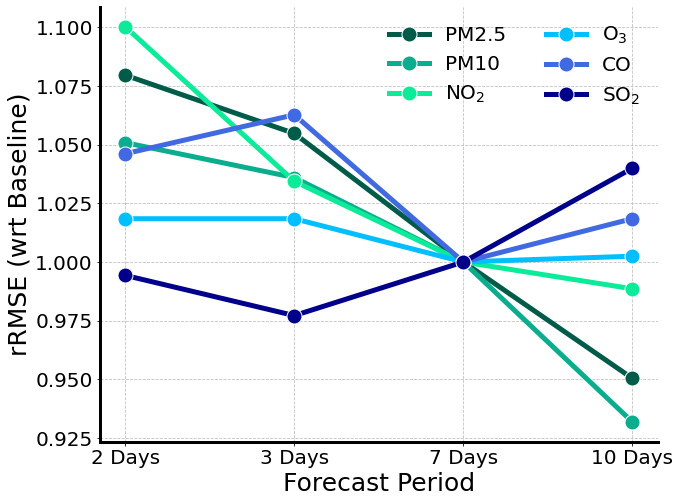|
2University of Toronto 3Zendrive Inc * denotes equal contribution |
|
|
|
|
|
|
|
Air pollution poses a serious threat to sustainable environmental conditions in the 21st century.
Its importance in determining the health and living standards in urban settings is only expected to increase with time.
Various factors ranging from artificial emissions to natural phenomena are known to be primary causal agents or
influencers behind rising air pollution levels. However, the lack of large scale data involving the major artificial
and natural factors has hindered the research on the causes and relations governing the variability of the different
air pollutants. Through this work, we introduce a large scale city-wise dataset for exploring the relationships among
these agents over a long period of time. We also introduce a transformer based model - cosSquareFormer, for the problem
of pollutant level estimation and forecasting. Our model outperforms most of the benchmark models for this task.
We also analyze and explore the dataset through our model and other methodologies to bring out important inferences
which enable us to understand the dynamics of the casual agents at a deeper level. Through our paper, we seek to provide
a great set of foundations for further research into this domain that will demand critical attention of ours in the near future.
 |
Table below shows the performance of predictions from different models for all 6 pollutants. LSTM E and Attention LSTM E are trained on explicit
information of weekday and month whereas the explicit information have been excluded while training the remaining models.
|
|
Deciphering Environmental Air Pollution with Large Scale City Data. In IJCAI 2022. |
|




